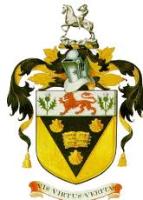
In both scholarly and popular literature, black students in South Africa have tended to be treated in two ways: simply as victims of apartheid in appalling education conditions, or as catalysts of educational and political struggle through their campaigns. Yet their role as activists has seldom been analysed.
In his book, Black Man You Are On Your Own, Saleem Badat attempts to rectify the relative silence by examining the South African Students' Organisation, formed in 1968 and popularly associated with the person of Steve Biko. In particular, Saso gave birth to the Black Consciousness movement, was the leading formation within it, and did much to revitalise black opposition politics during the 1970s before being banned in 1977.
IF WE were to summarise the character of the South African Students' Organisation (Saso) in a single sentence, we would say that it was a mass, black, revolutionary, national, tertiary, student political organisation. While this doesn't exhaust all the key features, it does convey the gist of what Saso was.
Let me sketch the points one by one.
Saso membership was restricted to students in tertiary institutions and it was located first and foremost on those campuses. Yet it did also operate through off-campus local branches as a way of catering for correspondence students and circumventing the repressive actions of higher education authorities.
Since the literature on student politics has tended to blur categories such as "student movement", "student organisation" and "student body", I repeat that Saso was a student organisation, not a student movement.
A student movement is not reducible to a single organisation, or an extension of one or even many student organisations. But it is often the case that a student organisation stands in a particular relationship to the student movement, enjoys a certain status within it, and plays a certain role in it.
Saso was politically and organisationally dominant within the black higher education student movement of its period: it stood at its head and provided political direction and leadership to the student body and to other student organisations. Saso was a political student formation.
To employ Burawoy's definition of "politics", Saso was engaged in "struggles over ... relations of structured domination, struggles that take as their objective the quantitative or qualitative change of those relations". Through its concerns with student rights and the democratisation and transformation of educational institutions Saso was involved in education politics and in struggles around relations in education.
And, as a consequence of its concerns on citizenship, human and political rights for the black oppressed, and national liberation and social transformation in South Africa, it was also involved in state politics and in struggles on social and political relations in South Africa.
Saso was also political in holding distinct ideological and political positions, and the basis of affiliation to it was essentially political. It was revolutionary and national too: it formulated the doctrine of Black Consciousness, defining "race" and racial oppression as the primary problem. In these terms, united political action by "blacks" (African, Indian and coloured South Africans) was to be the means for ending apartheid.
Its goals were the psychological and physical liberation of black South Africans and the creation of a non-racial society.
Saso paid little attention to the issues of class and capitalism, and left vague the content and class character of the non-racial society to which it was committed. To the extent that capitalism in South Africa was inextricably linked with white political domination and Saso's object was to end this domination, and that through its actions it made a significant contribution to eroding white political control, it is entirely appropriate to call it a revolutionary formation.
The questions of class and capitalism were not entirely absent in Saso. They arose towards the end its existence and radicalised Saso's attack still further (a gravitation towards a Marxist analysis of South African realities then led to the accusation that Saso was going "red").
A key characteristic of Saso was its exclusively black membership. They said this was a strategy rather than a principle. Black exclusivity became a basic tenet of Black Consciousness be-cause of a rejection of what was perceived to be white domination in the definition of the goals and strategies ' of anti-apartheid resistance politics.
As a result, relations with white anti-apartheid organisations were strongly discouraged. But with Saso there, black students would no longer be onlookers and on the side lines of anti-apartheid politics and would "do things for themselves and all by themselves".
Saso was a national body even though it was composed mainly of students at the black universities and its presence was largely restricted to the areas called "white" South Africa. The geographical and institutional spread was determined by historical conditions.
During Saso's existence, there were very few black students at the white English-language universities, only one university in the bantustans and no technikons (al-though there were colleges of advanced technical education, their tertiary enrolment was very small).
But as an organisation it had national, regional and local structures and officials, and its chief purposes were truly national in spirit, as we have seen, Saso being fully committed to national transformation and liberation.
Lastly, Saso was a mass organisation.
If by "mass" we mean the vast majority of black students as members, Saso would not qualify at all; it was made up essentially of politically committed activists and formally en-rolled only a very small percentage of the student body. Most students were just supporters and sympathisers. But it enjoyed widespread support among black tertiary students and was able to mobilise and engage the bulk of them in collective action.
Dr Saleem Badat is vice-chancellor of Rhodes University. Black Man You Are On Your Own, from STE Publishers, is available from bookstores nationwide
